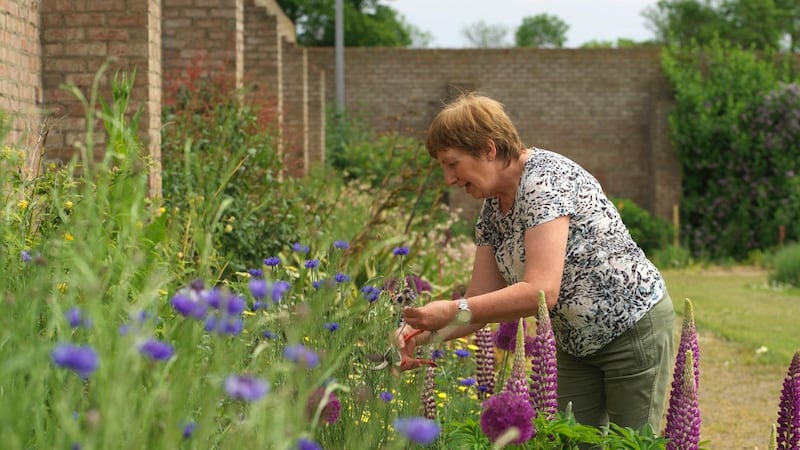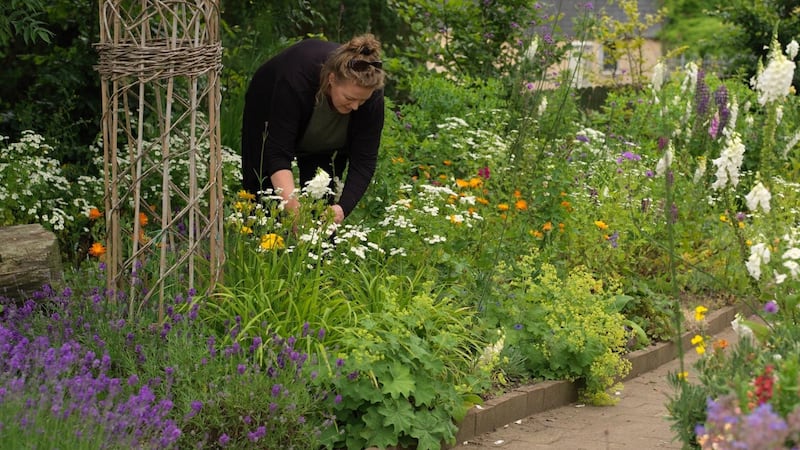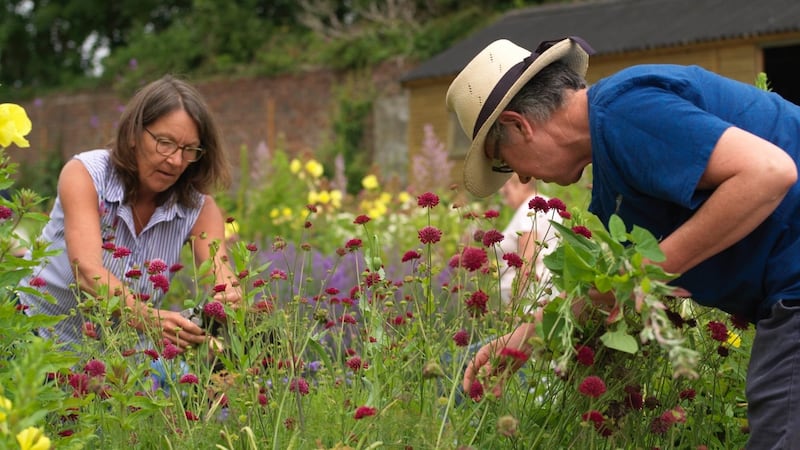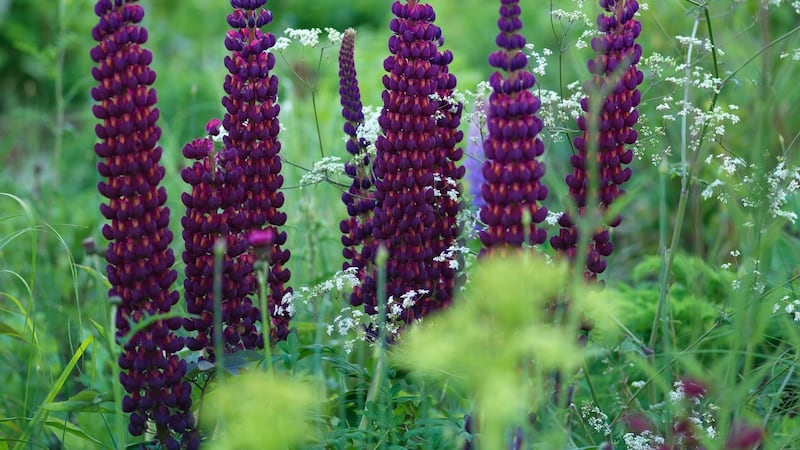What do you do when you love to garden but don’t have a garden of your own? That’s the conundrum facing an increasing number of Irish people as apartment living becomes the norm in so many of our cities and larger towns. Some – the younger generation of gardenless gardeners – take solace in weekend visits to family homes, as a heightened appreciation of each and every square foot of covetable growing space makes those previously taken-for-granted flower borders and vegetable beds seem suddenly very precious.
Others garden vicariously via the internet, garden books, television programmes and garden visits. Many channel their horticultural energies into growing indoor plants, filling windowsills, hallways, bathrooms, bedrooms and kitchens with an impressive array of container-grown specimens. But enjoyable as all of these activities are, none provide the intense, visceral joy that comes from proper, muddy-fingered gardening outdoors, or that deep-rooted sense of belonging to the natural world and being part of that magical flux and flow of growth and new life. So what to do?

If all of the above sounds painfully familiar, then rest assured there are ways you can put those green fingers to proper use. One solution is to join one of the growing number of thriving community gardens around the country, whose members have established and collectively care for some truly wonderful outdoor spaces. Don’t think these are solely for kitchen garden enthusiasts. I’ve visited many remarkable Irish community gardens where people of all ages, creeds and backgrounds have come together to create beautiful, tranquil, biodiverse gardens that are home to wildlife ponds, orchards, wildflower meadows, cut-flower patches, herb gardens, herbaceous borders and more.
A few outstanding examples include Santry Community Garden, Baldoyle Racecourse Community Garden, Mud Island Community Garden in Dublin's North Strand, St Brigid's Community Garden in Stillorgan, Tearmann Community Garden in west Wicklow, Gairdín Beo in Carlow town, Castlebridge Community Garden in Co Wexford and the Birr Community Growery in Co Offaly. All are used to grow a fantastic mix of delicious fruit and vegetables but they're also used to grow beauty, nurture wildlife, promote wellbeing, share knowledge, empower local communities and provide social support as well as to form new friendships with like-minded people. To find out if there's a community garden close to you, visit the website of Community Gardens Ireland, a voluntary organisation that provides an online support network (cgireland.org).
Personal allotments
Many community gardens also offer a limited number of personal allotments to their members to rent. So not only do you get to share the bounty of a shared communal space, from delicious homegrown produce to armfuls of organic cut flowers, but you also get to stick your spade in a patch of ground and call it your own. Other public gardens, such as the non-profit Festina Lente in Bray, Co Wicklow, whose walled garden is home to an ornamental formal garden, a therapeutic sensory integration trail, a garden pool and a working kitchen garden, also offer allotments for rent – although such is their popularity that there is a waiting list (festinalente.ie).

Another way to garden when you don't have a garden of your own is to become a volunteer at one of Ireland's many large historic gardens. Examples include Killruddery in Co Wicklow, where you can help tend its large walled kitchen garden under the guidance of Killruddery's kitchen gardener Frank Jesper. Working hours are 8.30am-3pm, Monday to Friday. While gardeners of all levels of ability are welcome, owner Fionnuala Ardee adds that the ideal candidates are those willing to make a long-term commitment to helping to care for this beautiful, historic Irish garden in the heart of the garden of Ireland. To volunteer, get in touch at info@killruddery.com.
The Royal Horticultural Society of Ireland (RHSI, rhsi.ie) also runs a garden volunteer scheme. No horticultural knowledge is required – in fact as part of its remit, the society actively encourages newbie gardeners to come and learn from more experienced members – so don't feel you need to know your primulas from your polygonums to enlist. The lovely walled gardens of Russborough House in west Wicklow, which are in the process of being restored by the society, are managed under this scheme, as are the smaller gardens of Laurelmere Cottage in Rathfarnham, Dublin. For details, see rhsi.ie.
The New Growth Project, a social initiative run by Ciarán Bourke of the Garden School (thegardenschool.ie) with the support of Dún-Laoghaire Rathdown County Council and situated in the walled gardens of Marlay Park in Rathfarnham, Dublin 16, just next to Laurelmere Cottage, also welcomes volunteers.

Yet another organisation that facilitates gardenless gardeners throughout the country is Volunteer Ireland (volunteer.ie), while if you're based in the north of the country, the National Trust runs a volunteer scheme for the various Irish gardens under its care including Mount Stewart and Rowallane, (nationaltrust.org.uk).
While the OPW (Office of Public Works, opw.ie) doesn't run an equivalent volunteer scheme for the many Irish gardens under its care, its chief parks superintendent Margaret Gormley says it's happy to consider garden volunteer applications on " a case-by-case basis". Some of the smaller, well-known private Irish gardens also take on volunteers, including the remarkable Hunting Brook in west Wicklow (huntingbrook.com). According to owner Jimi Blake, several former volunteers discovered they loved it so much that they went on to forge new careers in horticulture. In short, don't give up on gardening simply because you don't have a garden. Instead find a garden-owner looking for someone to share the load as well as the love . . .
This week in the garden
Lupins are one of the gems of the early summer flower garden, producing their tall, large, colourful flower spikes in a variety of different colours to light up Irish flower borders at this time of year. To prolong their display and encourage a second, later burst of flowers, give plants an occasional liquid feed and make sure to deadhead any faded blooms. Early June is also an excellent time to sow seed of this hardy, floriferous, leguminous perennial, while container-grown plants are also available from most good garden centres at this time of year.

Recommended seed suppliers include Galway-based Seedaholic (seedaholic.com), which offers seed of the award-winning Lupin 'Band of the Nobles' mix, which comes in a range of shades including crimson, white, pink/white, blue/white and carmine pink. Lupins like an averagely fertile, well-drained but moisture-retentive soil in full sun and need careful protection from slugs. Young growth can sometimes be attacked by large numbers of lupin aphids, which causes the plants to wilt – organically acceptable methods of control include washing them off with a spray of water or using a spray such as 'Uncle Tom's Natural Soft Soap' (available from Cork-based fruithillfarm.com)
In the kitchen garden, start keeping an eye out for the eggs and larvae of cabbage white butterflies. The latter lay their egg on the underside of leaves of members of the brassica family including cabbage, cauliflower and kale. The eggs, which are either white or yellow depending on whether they are the eggs of the large or the small white butterfly, are laid in tight clusters on the undersides of the leaves and can easily be crushed between your fingers at this time of year. Left untouched, they will soon hatch out into green caterpillars that will quickly devour the leaves of your brassica plants. To protect young brassica plants from attack, it’s a good idea to grow them them under protective netting to prevent the butterflies from reaching them.
To ensure that tender bedding plants/flowering annuals continue to produce their colourful, floriferous displays throughout the summer and early autumn months, it’s imperative that you keep them (a) well watered but not sodden (b) well-fed but not so well-fed that they resemble the horticultural equivalent of a fattened Christmas goose. In other words, follow a balanced feeding schedule using a liquid seaweed/tomato feed and deadhead regularly. Remember that once you let a plant start to set seed, it moves on to the next stage of its life-cycle, which is all about reproduction through seed. But if you interrupt this phase by regularly deadheading any spent flowers, the plant will generally will do its very best to produce more flowers in the hope of . . .yes, you’ve guessed it, producing more seed.
Dates for your diary
Tomorrow, June 10th, Spink Community Grounds, Spink, AbbeyLeix, Co Laois, Buds & Blossoms Laois Garden Festival' with guest speakers Bob Brown of Cotswold Garden Flowers, Paul Smyth, plantsman and chief propagator at Crug Farm Plants, and broadcaster and garden writer Dermot O' Neill, specialist plant sales and local food producers, admission €5-€10, children free, see laoisgardenfestival.com.
Saturday, June 16th (2pm), Woodville Walled Garden, Kilchreest, Co Galway, 'Scenting and Searching the Rose' a talk by horticulturist Assumpta Broomfield on the importance of the rose in art, politics and religion with tales of eccentric women, plus anecdotes of great explorers and collectors, followed by a guided tour of the gardens, admission €10 including light refreshments, for details contact Margarita at (087) 906 9191, booking required, see woodvillewalledgarden.com.
Saturday, June 16th, ISNA/Bloomsday Rare Plant Fair, Tullynally Castle, Castlepollard, Co Westmeath, with plant sales and readings from James Joyce texts in the castle gardens, admission €3-€7, see tullynallycastle.ie and irishspecialistnurseriesassociation.com.
Sunday, June 17th, inaugural Limerick Garden Festival, Milk Market, Limerick, with plant sales, expert talks and food market, adult admission €5 (children free), see limerickgardenfestival.com.















